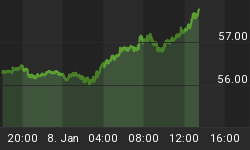As the tide further moves against the US dollar, many traders may rush into opening fresh sell positions in the greenback. This may not be advisable ahead of thinning holiday trade and next week's busy schedule.
We have already emphasized the importance of today's higher than expected US jobless claims, rising to 321K from 309K and lifting the 4-week average to 317K, the highest reading since the week of July 15. We attributed the importance of the report to the fact that the weekly jobless claims in the US had consistently shrugged the weakness shown in the monthly employment payrolls.
Today's release may mark the confirmation of a broader loosening in US labor markets, and may even give more credence to rumors indicating a revision in the October unemployment rate from 4.4% to 4.6% and a downgrade in US growth forecasts from the White House's Council of Economic Advisers. The CEA attributed its revisions mainly to the downturn in the housing market. While many economists are starting to talk about a Fed rate cut at the March meeting, we are not ruling out chances of a rate cut at the January 30/31 meeting.
The Fed outlook could be made clearer in next week's data, especially the core PCE, the manufacturing ISM and the new/existing home sales. The speeches from Bernanke, Lacker and Kohn should also be key. We view chances of the ISM manufacturing falling below the 50 level to be as high as 70% because the monthly change in the series this year has averaged -0.8%. Considering that the October figure stood at a 51.2, it would take just a 3.0% decline to see a sub-50 reading, an event that carries a significant market impact in accelerating expectations of a January rate cut. The October figure was the lowest since June 2003 and the last time the headline figure had fallen below 50 was in May 2003. We therefore stand with our call made 5 weeks ago of a 50% probability for a rate cut in January 31.
Turning to Thursday's data, the key figure will be Germany's IFO business sentiment survey (4:00 am EST / 9:00 am GMT), expected to have edged up to 105.2 from 105.3, while the current conditions seen up at 112.0 from 111.8. But the euro could be pressured by expectations index, which is seen falling to 98.8 from 99.2. Recall last month's IFO release boosted the euro when it rose unexpectedly in October, reflecting executives' optimism with falling oil prices and overcoming worries of VAT hike and higher interest rates.
A disappointing IFO figure is likely to accelerate the euro's retreat against the yen (see chart below), calling up the preliminary target of 150.65 -- 38% retracement of the 148.87-151.65 move. With the MACD signaling further reduction in bullishness, the cross pair could extend its slide towards the 150.30s, especially if Japanese officials express concern with volatile movements in the yen. An upside surprise in the IFO survey is apt to lift the pair towards the 151.30s, with resistance acting near the 151.65 high.

The slide in USDJPY (chart below) shattered the 100-day moving average as well as the 3-month trend line support (green support trend line) at 116.80. A rebound towards the 117.20s cannot be ruled out as is often the case after periodic bouts of yen strength. In the event that Japanese politicians shed more light on yesterday's official downgrade in economic assessment, interest rate markets can further delay probabilities of a BoJ rate hike and eventually call up 117.60. We see consolidation around the 116.70-117.40, before the market gears up for next week's barrage of US data. 200 day MA remains medium target at 115.94.

A shorting opportunity is seen in the AUDEUR chart below, where the fundamentals are increasingly stacked in favor of the euro in light of further ECB tightening. This is in contrast with Aussie fundamentals where the deteriorating drought, slowing GDP, weaker labor markets, soaring trade deficit and cooling retail sales should all mark the end of the 4 year tightening cycle. As AUDEUR nears the triangle, we see the interim downside target called up at 59.85 -- 38% retracement of the rise to 60.08. Watch out for a breach of the triangle support at 59.72, which is followed by the 200 day MA of 59.50. Medium target at 59.30.

















